About Project Selva
Development of a CO-OP in the Upper Amazon Basin with Indigenous Groups: An Approach to the Conservation of Amazonian Rainforest
Department of Conservation & Research, San Antonio Zoo
Introduction
The Amazon Basin is littered with the corpses of well-intentioned conservation projects that failed in one way or another. Millions of dollars have flowed into the region over the past seventy years with the good intention of “saving the rainforests.” Few programs have flourished and the reasons for the failures are many; however, key shared characteristics are not difficult to find among these failed efforts. The old adage that “you can’t succeed without local support” is as true in the Amazon Basin as it is anywhere else in the world. Among the many problems with many western approaches to Amazonian rainforest conservation initiatives have been a failure to (1) recognize the importance of indigenous peoples to the conservation of local forests and (2) to see the massive differences in culture between the west and indigenous communities living in said rainforests. Put simply, western approaches thrust onto local communities is not a good approach and have produced, at best, a mixed record across the Amazon Basin.
San Antonio Zoo has piloted an approach that was borne from discussions with indigenous communities in northeastern Peru. Based on trust developed over 25 years of working with indigenous communities during biological surveys, this program approaches rainforest conservation from the perspective of the people living in the forests. Indigenous leaders have identified areas of need and have specified points in time where communities have been inclined to sell logging or mineral extraction rights. These activities remove the rainforests in a given region or irreparably alter them. Supporting indigenous groups so that they are less inclined to allow removal of rainforest from their territories is one goal of San Antonio Zoo – with an ultimate goal of protecting the wildlife and wild places of the region.
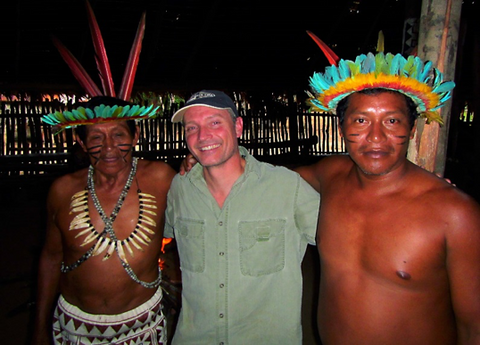 Figure 1. Dr. Fenolio, founder of Project Selva, with indigenous leaders in the Peruvian Amazon.
Figure 1. Dr. Fenolio, founder of Project Selva, with indigenous leaders in the Peruvian Amazon.
A big problem throughout Amazonia is lack of a regular income stream and direct access to cash. One indigenous leader explained to us that his people can always build houses, can live comfortably without either plumbing or electricity, and can eat manioc or rice if nothing else is available. What they cannot do is easily generate cash for necessities such as medicines or medical attention. This is one of the reasons why community timber and property rights are sold to outside interests, often with undesirable consequences. An additional problem that has historically affected organized efforts to assist individuals or communities in the Amazon Basin is heavy bureaucratization and a tendency towards having outsiders decide what is immediately necessary for locals.
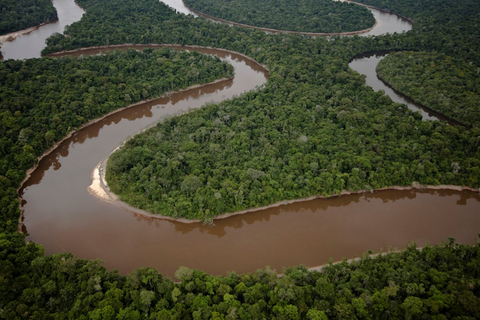
Figure 2. An expanse of uncut Amazonian rainforest in northeastern Peru.
Development of a Co-Op
One way of approaching the identified problem (as an action step to supporting the maintenance of rainforest under the control of indigenous groups) is via establishment of a co-op. Unlike government entities, a co-op does not require onerous and costly infrastructure, nor does it risk becoming unduly complex and heavy-handed. The Peruvian Amazon is populated mostly by mestizo indigenous communities that live along the rivers and by several indigenous groups such as the Cocamas, Boras, Yaguas, Ocainas, and Witotos. San Antonio Zoo opened an office in the Amazonian city of Iquitos to found a co-op where select arts and crafts can be purchased from indigenous communities. Our co-op solicits and obtains these artisan items from locals, including such things as traditional bracelets, necklaces, carvings, bark paintings, and more. The items we seek form a part of local life and allow for inclusiveness of a much larger indigenous constituency in this co-op. We do not purchase items made of feathers, seeds, teeth or other animal and plant parts that are prohibited for export. Items are then exported to the zoo for sale in zoo gift shops. Funds from the sale of these items go directly back into maintaining the program - which in turn provides a regular revenue stream to indigenous artists and communities. To be absolutely clear, our idea is to provide remote indigenous peoples with a revenue stream that does not involve timber harvest or oil/mineral extraction from their land. We do not claim that our initiative solves deforestation in the Amazon nor is there likely any silver bullet solution at this point. What we do want to be actively exploring are pathways through which local communities can be supported in ways to promote the retention of forest and the biodiversity that lives there.

Figure 3. Indigenous arts purchased from Peruvian artists and sold in the gift stores at San Antonio Zoo
It is important to bear in mind that there are trenchantly different cultural outlooks both among local groups and especially between them and cultures in other countries, such as the US. Owing to this, the idea is to approach interested individuals regardless of indigenous affiliation. It is likely that such relationships will quickly spawn further interest such that guilds of artisans in one indigenous group will participate but, if such is not the case, the endeavor will still function.
Developing skill sets and opportunities for indigenous artists
We wanted this project to develop some signature artistic products and wanted to center them around Peruvian artists. We worked through a long process that took into consideration the resources available to indigenous artists but would deliver artistic pieces different than those that were being produced in the region prior to our project. One resource for which the Amazon Basin is famous is the diversity of fishes. In fact, there are more species of freshwater fishes in the Amazon than in any other corner of the planet. The indigenous groups of the Amazon Basin are intimately tied to the fishes in the region because they are an indispensable resource and serve as a critically important protein source. No one knows the diversity of fishes in these forests like the people living there. So we thought about other cultures that had strong ties to fishes and the Japanese culture immediately came to mind. One method that arose in the Japanese culture to record their catches of fishes was fish printing, known as gyotaku.
Gyotaku involves painting a fish with non-toxic dyes, placing rice paper onto the fish, and extracting a print of the fish, an exact replica, once the art form is perfected. Subsequently to this, the print is meticulously hand painted. It quickly became apparent to the organizers of Project Selva that we had found an art form to import into the Amazon Basin. San Antonio Zoo arranged for a famous gyotaku artist to fly to the Peruvian city of Iquitos and teach two hands-on training exercises in gyotaku technique to a small group of Peruvian artists. The workshops lasted a week each and the artists quickly picked up the methods. In a very short time, the Peruvian artists not only demonstrated proficiency in their gyotaku skill sets, but began altering the art form in their own ways to deliver an artistic product uniquely their own. This was exactly the outcome for which San Antonio Zoo had hoped.
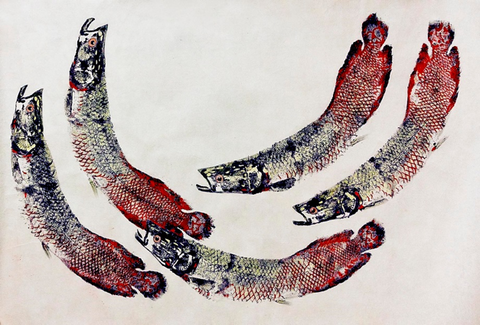
Figure 4. A gyotaku fish print produced by Peruvian artists after the training workshop organized by San Antonio Zoo.
Gyotaku fish prints will be available in select galleries in North America and Mexico. The prints have been used on T-shirts, stationery, greeting cards, etc., which are available in the gift stores at San Antonio Zoo. The funds raised from the sales of these items are used to maintain the office in the city of Iquitos so that the project can continue to purchase indigenous art from local communities and support them through a stable revenue stream.
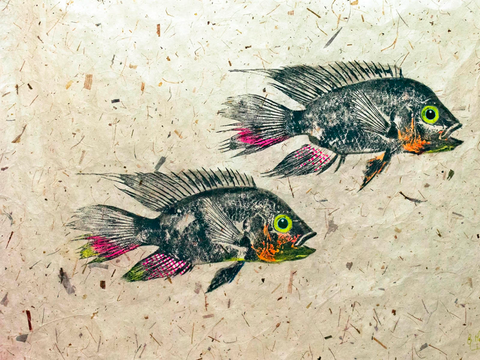
Figure 5. Gyotaku fish print of Amazonian cichlid fishes.
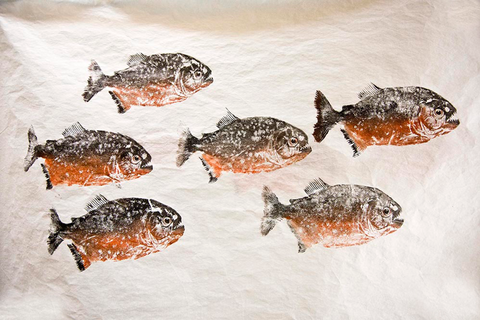
Figure 6. Gyotaku print of the infamous piranha.
Three of Our Peruvian Artists
Judith "Judy" Cerepera Murrieta was born on the Amazon River at a settlement called Indiana, and she was raised on a nearby island. As an interesting aside, the famous comedian/actor Cantinflas was for many years an anonymous benefactor of Indiana. However, when she was quite young she was sent to live in Lima with relatives so she might obtain a more traditional education. Judy returned to live in Iquitos in 1992. Unlike those raised along the river, where a culture of immediacy and instant gratification is about the only way to get along, Judy understands how the "outside" operates. At the same time, being a native of the region, she has deep knowledge of local people and how to work with them. For 20 years she worked closely with ecotourism companies dealing especially with riverboats and their clients, so she also has deep knowledge of North Americans and how to work with them.

Johnathan Laulate was born in the Amazon River community of Yanamono and spent his entire childhood in the rainforests of the region. He has worked in ecotourism for the past five years and is extremely valuable when it comes to organizing and running expeditions such as those necessary in order to visit indigenous groups and river communities. He is tireless and adept in all things related to managing projects in wilderness and adjacent areas.

Elmer Macahuachi was born and raised on an island in the Peruvian Amazon River. Although he found himself in an agricultural world, early-on Elmer showed a strong interest in technical things and detail. He entered the military and his service years brought valuable experience in dealing with equipment. He is meticulous in his attention to detail and loves the intensive process of making gyotaku prints. Elmer also maintains our outboard motor and helped build our boat. He and his family live in the city of Iquitos.

The endgame for San Antonio Zoo
The efforts put into supporting indigenous communities and their desire to maintain stands of rainforest on traditional lands are an action step toward a specific goal, retention of Amazonian rainforest in the upper Amazon Basin. The forests that these indigenous groups live in are home to the greatest assemblage of biodiversity on Earth. Scientists continually describe new species from these forests and the diversity of life is staggering. For example, in a square hectare of Amazonian rainforest (2.47 acres), there can be as many as 750 species of trees! In the entire lower 48 states, there are 1000 species of trees. Developing pathways through which local support for the conservation of rainforest can be bolstered is the aim of this program.

San Antonio Zoo will continue to explore avenues through which it can help support groups wanting to maintain stands of rainforest in the upper Amazon Basin. The conservation landscape in the region is dynamic so we will be flexible and will adapt when and where we need to. Support of wildlife and wild places is always our goal. If you have any question regarding our efforts, please feel free to contact me directly. I very much appreciate your time and support.
Kindest Regards,

Danté Fenolio, Ph.D.
Vice President, Conservation and Research
San Antonio Zoo
3903 N. St. Mary’s St.
San Antonio TX 78212
dante.fenolio@sazoo.org


